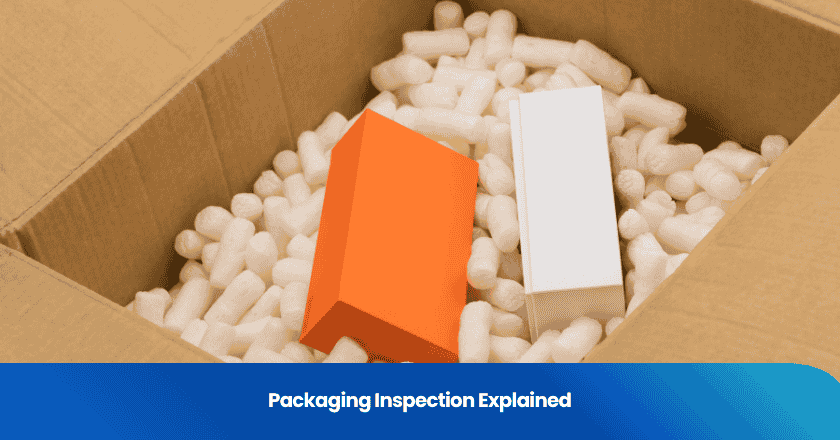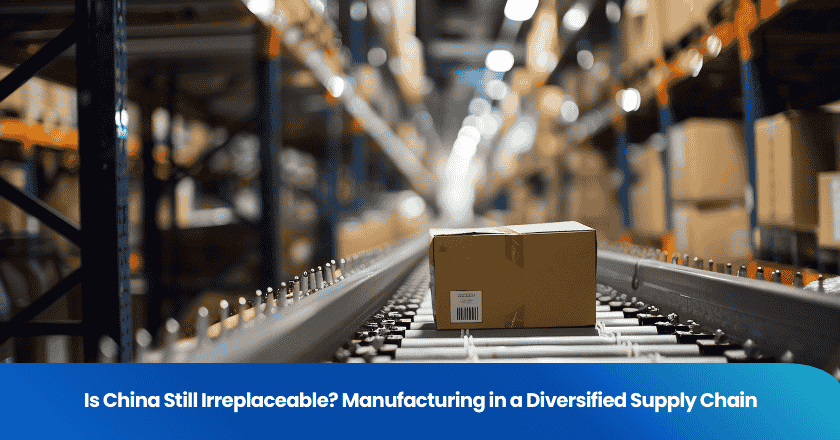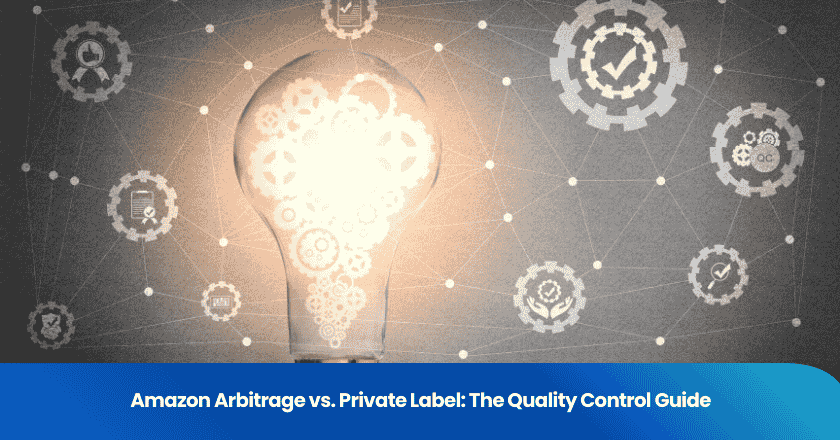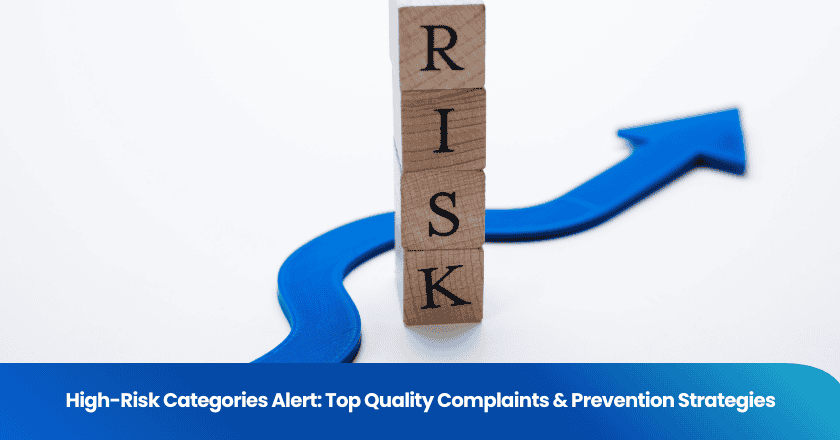
Packaging inspection means evaluating packaging components and finished goods against strict standards and regulatory requirements. You rely on inspection to safeguard product integrity and prevent costly defects. This process uses visual checks, structural tests, and contamination assessments to ensure safety and consistency.
Advanced quality control reduces spoilage and recalls, so you receive products in optimal condition.
Early detection of weaknesses in packaging improves protection and lowers return rates.
High-quality inspection maintains customer trust and protects brand reputation.
Key Takeaways
- Packaging inspection ensures products meet quality and safety standards, preventing costly defects and maintaining product integrity.
- Automated inspection systems enhance accuracy and efficiency, detecting over 99% of defects and reducing the risk of recalls.
- Regular inspections help maintain compliance with industry regulations, protecting consumer safety and preserving brand reputation.
- Investing in packaging inspection reduces waste and costs, leading to fewer returns and improved customer satisfaction.
- Effective packaging inspection builds consumer trust and loyalty, as consistent quality and clear labeling influence purchase decisions.
Packaging inspection basics
Definition
You use packaging inspection to verify that every package meets strict quality and safety standards. This process checks both the materials and the finished goods before they reach the market. The main purpose is to ensure that products arrive intact, safe, and compliant with regulations. Packaging inspection helps you identify defects early, reduce waste, and maintain consistency across your supply chain.
Note: International standards organizations define the primary objectives of packaging inspection as cost optimization, material validation, performance verification, and consistency. These objectives help you minimize losses and maintain high-quality standards.
| Objective | Description |
|---|---|
| Cost Optimization | Mitigates damages accrued through distribution |
| Material Validation | Validates material selection during box design |
| Performance Verification | Verifies the physical performance of materials under different conditions |
| Consistency | Yields consistent test results |
Key components
A thorough packaging inspection process involves several critical elements. You need to check the product variety and quantity in each carton, confirm the use of correct packing materials, and verify that all barcodes and labels are clear and accurate. These steps ensure that your packaging meets industry benchmarks and avoids costly errors.
| Critical Element | Description |
|---|---|
| Product variety and quantity per carton | Inspectors verify that the correct products and quantities are present in each packaging carton. |
| Correct packing materials are used | Packaging must be durable and suitable for various conditions, requiring inspection of multiple layers. |
| Barcodes and labeling | Ensures that all markings are clear to avoid issues like fines and delays during shipping. |
You must also follow regulatory standards that apply to your region and industry. For example, food and pharmaceutical packaging inspection often requires compliance with specific national and international regulations.
| Region | Regulatory Body/Standard |
|---|---|
| Australia | Australian Packaging Covenant Organisation (APCO), Department of Climate Change, Energy, the Environment and Water (DCCEEW) |
| Canada | Canadian Food Inspection Agency (CFIA), Environment and Climate Change Canada (ECCC) |
| European Union | European Commission, European Environment Agency (EEA), REACH, EU Green Deal/Circular Economy Action Plan, Packaging and Packaging Waste Directive (94/62/EC) |
| International | ISO 18601 to ISO 18606, ISO 11607, ISO 15378, Codex Alimentarius, UN Model Regulations Rev. 23 (2020) |
Types
You can choose from several types of packaging inspection methods, each designed to address specific risks and requirements. Physical tests simulate real-world conditions to ensure your packaging can withstand handling, transport, and storage. Automated systems use advanced technology to detect defects quickly and accurately.
| Testing Method | Purpose | Standards/Equipment |
|---|---|---|
| Drop Test | Simulates the impact of dropping during shipping and handling. | ISTA 1A, ASTM D5276 |
| Vibration Test | Assesses how packaging holds up to consistent vibrations during transit. | Electrodynamic or hydraulic vibration tables |
| Compression Test | Measures package's ability to withstand stacking pressure. | ASTM D642, Vertical compression testers |
| Climate Conditioning Test | Evaluates packaging performance under environmental extremes. | N/A |
| Burst and Puncture Tests | Determines strength against sudden pressure changes or impact penetration. | ASTM D3786, ASTM D3420 |
Automated inspection technology provides you with consistent, objective, and traceable quality control. These systems analyze a high volume of products quickly, allowing you to address issues before they lead to recalls or regulatory penalties. AI-powered systems maintain scrutiny across thousands of units per hour, ensuring improved accuracy and consistency. Automated pharmaceutical packaging inspections enhance efficiency and safety, detecting tiny defects that manual inspections might miss.
Tip: Automated inspection systems can achieve over 99.5% accuracy while processing more than 1,000 products per minute. Industry benchmarks suggest a 25% reduction in defect rates when you implement these technologies.
By understanding the basics of packaging inspection, you can build a robust quality control process that protects your products, meets regulatory requirements, and satisfies your customers.
Why integrity matters
Packaging inspection plays a critical role in maintaining the integrity of every product you deliver. When you focus on integrity, you protect the safety of packaged products, reduce damage, and build trust with your customers. You need to understand how inspection supports each aspect of your business, from product quality to brand reputation.
Product quality
You rely on packaging inspection to safeguard product quality at every stage. When you inspect packaging, you confirm that materials and methods protect products during transport and storage. Inspections prevent contamination and ensure that packaging remains intact. Regular audits help you comply with industry standards and preserve your reputation. Maintaining product quality through inspection enhances customer satisfaction and reduces complaints.
| Aspect | Explanation |
|---|---|
| Safeguarding Products | Packaging inspection ensures that materials and methods protect products during transport and storage. |
| Prevention of Contamination | Inspections help prevent health risks by ensuring packaging is intact and effective. |
| Compliance with Regulations | Regular audits ensure adherence to industry standards, preserving brand reputation. |
| Customer Satisfaction | Maintaining product quality through inspections enhances overall customer experience. |
Consumer safety
You must prioritize safety when you inspect packaging. Defective packaging can allow contaminants to enter, leading to health risks. Moisture, oxygen, or microbes may compromise pharmaceuticals or food products. Even small breaches in sterile packaging can cause microbial contamination. Chemical degradation and physical damage may result in reduced effectiveness or adverse side effects. When you maintain integrity, you protect consumers and reduce the workload for healthcare professionals.
Compliance
You must meet strict compliance requirements to ensure the safety of packaged products and maintain integrity. Packaging inspection helps you implement documented safety and quality management systems. You need to maintain site standards to prevent contamination. All personnel must receive adequate training and supervision regarding product safety and quality. You should keep detailed records of packaging specifications, testing results, and supplier certifications. Regular training for staff involved in packaging operations is essential. Conducting hazard analysis and risk assessments allows you to identify and control hazards. Standard operating procedures and staff training records demonstrate compliance during audits.
- Implement a documented product safety and quality management system.
- Maintain site standards to prevent contamination.
- Ensure all personnel are adequately trained and supervised regarding product safety and quality.
- Maintain detailed records of packaging specifications, testing results, and supplier certifications.
- Ensure regular training for personnel involved in packaging operations.
- Conduct documented hazard analysis and risk assessments to identify and control hazards.
- Standard Operating Procedures (SOPs) for packaging processes.
- Staff training records to demonstrate compliance.
Financial protection
You protect your business financially when you invest in packaging inspection. Poor packaging leads to increased material costs, lost production time, and wasted labor. Improperly packed products result in higher freight expenses, damaged shipments, and unnecessary handling fees. When you design packaging to withstand harsh transit conditions, you minimize damaged packages and reduce product returns. You preserve brand integrity and avoid expensive recalls.
- Increased material costs, lost production time, and wasted labor due to poor packaging.
- Higher freight expenses, damaged shipments, and unnecessary handling fees from improperly packed products.
- Proactively designing packaging that can withstand heat, humidity, drops, and turbulence helps minimize damaged packages and subsequent product returns.
- Properly designed packaging ensures products arrive unblemished at the customer destination, preserving brand integrity and preventing expensive returns.
"I STRONGLY recommend container loading inspection to EVERYONE interested in running a successful online business!" – Product Manager
Brand reputation
Your brand reputation depends on the integrity and safety of packaged products. Packaging inspection ensures that your packaging aligns with brand messaging and meets consumer expectations. Consistent packaging fosters trust and loyalty. When you ignore eco-friendly practices or provide unclear labeling, you risk alienating consumers and creating mistrust. Visual appeal and clarity in labeling influence purchase decisions at the point of sale. Thoughtful packaging choices build long-term consumer trust and loyalty.
- 73 to 85 percent of consumer purchase decisions are made at the point of sale, with packaging design being a key differentiator.
- Consistent packaging fosters trust and brand loyalty, while poor choices can damage reputation.
The choices you make regarding packaging design, materials, and functionality have significant long-term effects on how your brand is perceived. Consistent and thoughtful packaging inspection builds consumer trust and loyalty, while missteps can lead to misunderstandings and potential damage to your reputation.
Packaging inspection systems
Modern packaging inspection systems help you maintain quality, safety, and compliance throughout your production process. These systems combine advanced technology with real-time data tracking to detect defects and ensure every package meets strict regulations. You can integrate these systems with your existing quality control platforms, which streamlines workflows and improves supply chain efficiency.
Automated tools
You benefit from automated tools that transform how you manage packaging inspection. These tools handle tasks that once required manual labor, making your operations faster and more reliable. Automated systems perform:
- Label inspection and verification
- Content inspection and verification
- Quality control and sorting
- Cap, seal, and fill level inspection
- Plastic packaging and shrink wrap inspection
Automated equipment keeps your products fresh and professional during transport. You reduce human error and increase consistency, which helps you meet regulations and deliver safe products to your customers.
Vision systems
Vision systems play a crucial role in packaging inspection systems. You use intelligent cameras to check label placement, print quality, and legibility. These systems detect misprints, faded text, and label misalignment, which helps you avoid misbranding and regulatory issues. Vision inspection systems also:
- Monitor fill levels, cap seals, and label accuracy at high speeds
- Verify printed information like batch numbers and barcodes in real time
- Automatically reject faulty units and create a digital trail for compliance checks
Smart cameras inspect bottles, verify cap position, and check date codes. You gain seamless, fully automated quality control that is documented at every step.
Data analysis
Data analysis strengthens your packaging inspection systems by turning inspection data into actionable insights. You can identify trends and prevent defects before they occur. Real-time analytics give you immediate feedback on packaging line performance. This allows you to optimize operations, improve product quality, and address inefficiencies quickly. Predictive analytics help you spot patterns that may signal potential problems, so you can take proactive measures and maintain compliance with regulations.
You ensure your packaging inspection systems support your compliance goals and help you deliver safe, high-quality products to your customers.
Defect detection and challenges
Common defects
You encounter a wide range of packaging defects during quality control. Typical issues include crushed corners, torn seals, misapplied labels, and damaged packaging. Foreign object contamination poses a serious risk, especially in food and pharmaceutical products. You may also find defects like incorrect fill levels, missing components, or improper closures. These problems threaten product safety, reduce shelf life, and disrupt supply chain traceability. Effective defect detection helps you identify these issues before products reach your customers.
Inspection issues
You face several challenges in defect detection and contamination prevention. Manual inspection can miss up to 15% of defects, which puts your products and compliance at risk. Automated inspection systems detect over 99% of defects, but no single method can catch every foreign object. You must address issues like inconsistent lighting, high-speed production lines, and complex packaging shapes. Maintaining supply chain traceability becomes difficult when defects go undetected. Damage and defect detection require constant attention to detail and robust quality control measures.
No single system can catch every possible contaminant. By combining the strengths of metal detectors, X-ray inspection systems, magnetic separators, mechanical sieves, and advanced AI-powered vision systems, you create a multi-layered defense that covers a wider range of potential foreign objects.
Solutions
You improve defect detection and contamination prevention by using a combination of advanced technologies. A multi-layered approach strengthens your quality control and supply chain traceability. You can integrate X-ray inspection systems, magnetic separation, mechanical sieves, and AI-powered vision inspection systems to identify foreign objects and packaging defects more effectively.
You also benefit from real-time data analysis and automated rejection of defective products. These solutions help you maintain compliance, improve supply chain traceability, and protect your brand reputation. Consistent quality control ensures your products meet safety standards and reach customers without damage or foreign object contamination.
You secure product quality, safety, and compliance when you prioritize packaging inspection. This focus leads to fewer returns, stronger customer loyalty, and a positive brand image. To improve your process, consider these strategies:
| Strategy | Description |
|---|---|
| Automated Inspection Systems | Use AI and imaging for swift, accurate defect detection. |
| Digital Prototyping | Visualize and test designs before production to reduce errors. |
| Daily Evaluations | Conduct regular checks to maintain high standards and minimize defects. |
By adopting these steps, you build trust, reduce costs, and support sustainable business growth.
FAQ
What is the role of verification in packaging inspection?
You use verification to confirm that packaging meets all regulatory requirements. Verification ensures that each step in your process aligns with regulatory standards. You rely on verification for accuracy, safety, and quality. Verification supports regulatory compliance and helps you avoid costly errors.
How does verification improve regulatory compliance?
Verification provides documented proof that your packaging meets regulatory standards. You perform verification at every stage, from material selection to final inspection. Verification helps you demonstrate regulatory compliance during audits. Verification also supports traceability and compliance across your supply chain.
Why is regulatory verification important for traceability and compliance?
Regulatory verification allows you to track every package through your supply chain. Verification ensures that you meet regulatory requirements for traceability and compliance. You use verification to document each step, making it easier to identify and correct issues. Verification supports regulatory reporting and audit readiness.
How often should you perform verification in packaging inspection?
You should perform verification at every critical control point. Verification includes checking materials, labels, seals, and finished goods. Frequent verification helps you maintain regulatory standards. Verification also reduces the risk of non-compliance and product recalls.
What are the main regulatory challenges in packaging inspection?
You face many regulatory challenges, such as changing standards and complex supply chains. Verification helps you address these challenges by providing clear documentation. Regulatory requirements often change, so you must update your verification process regularly. Verification ensures you stay compliant with all regulatory updates.
Tip: Regular verification and documentation help you respond quickly to regulatory changes and maintain compliance.
Grow your business with TradeAider Service
Click the button below to directly enter the TradeAider Service System. The simple steps from booking and payment to receiving reports are easy to operate.



